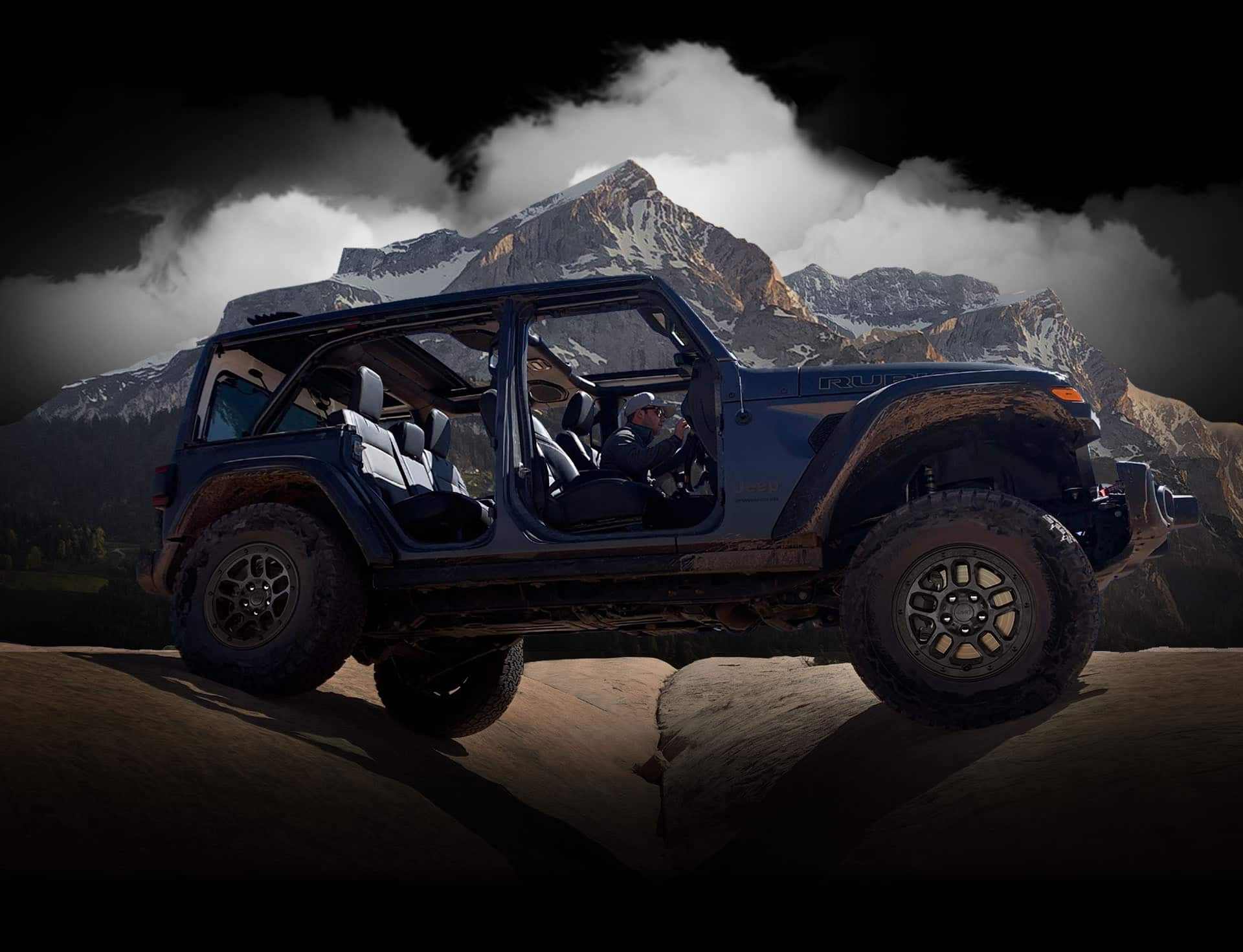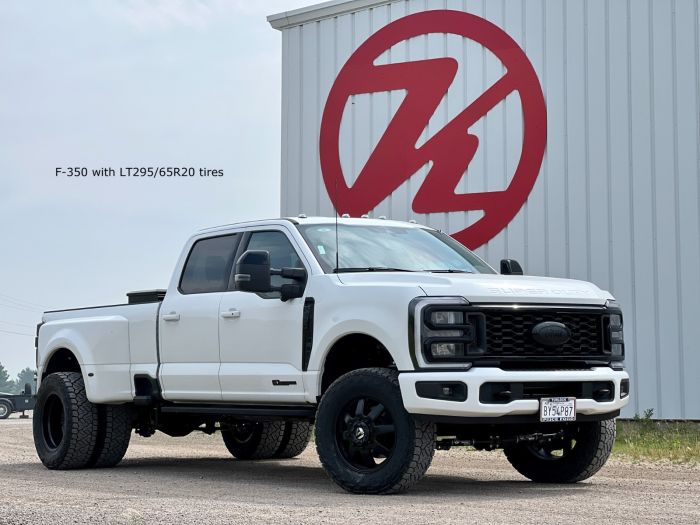Using two different size tires on the front and rear of a 4×4 vehicle is not recommended. It can cause issues with stability and handling.
When it comes to tires on a 4×4 vehicle, it is crucial to ensure that all four tires are the same size for optimal performance. Using two different size tires, especially on the front and rear axles, can lead to imbalanced braking, poor traction, and potential damage to the drivetrain.
It is important to consult the vehicle’s manufacturer’s guidelines and recommendations to ensure that all tires are properly matched in size and type.
Failing to do so could compromise safety and vehicle performance. Therefore, it is best to stick with matching tires on all four wheels of a 4×4 vehicle.

Credit: www.jeep.com
Benefits Of Using Different Size Tires On Front And Rear
Using different size tires on the front and rear of a 4×4 vehicle can offer various advantages. It helps with better traction on different terrains, improves stability and handling, and reduces the chances of tire wear. This allows for a more comfortable and controlled driving experience.
Improved Traction:
Different size tires on the front and rear of a 4×4 vehicle can offer several benefits. One of the key advantages is improved traction. By utilizing larger tires at the back and smaller tires at the front, the vehicle’s grip on the road is enhanced.
The larger rear tires provide increased traction, especially in off-road and challenging terrains. This helps the vehicle to navigate through muddy, snowy, or slippery roads with ease.
Enhanced Stability And Handling:
Another benefit of using different size tires on the front and rear of a 4×4 vehicle is improved stability and handling. With larger rear tires, the vehicle’s stability is increased, especially during high-speed maneuvers and cornering.
The larger contact patch of the rear tires provides a better grip on the road, minimizing the chances of losing control.
Reduced Strain On Drivetrain:
Using different size tires on the front and rear of a 4×4 vehicle also helps in reducing strain on the drivetrain. The larger rear tires make it easier for the vehicle to transfer power from the engine to the wheels, reducing the load on the drivetrain components.
This results in a more efficient power distribution and a smoother driving experience. In conclusion, using different size tires on the front and rear of a 4×4 vehicle offers several benefits.
It improves traction, enhances stability and handling, and reduces strain on the drivetrain. By utilizing larger tires at the rear and smaller tires at the front, drivers can optimize the performance and capabilities of their 4×4 vehicle in various road conditions.

Credit: kelderman.com
Considerations When Using Different Size Tires On Front And Rear
When it comes to upgrading your 4×4 vehicle, one consideration that often arises is using different size tires on the front and rear axles.
While this may offer some advantages in terms of performance and aesthetics, it is important to understand the implications and potential drawbacks before making a decision.
In this article, we will explore the key considerations to keep in mind when using different size tires on the front and rear of your 4×4 vehicle.
Choosing The Right Tire Sizes
Choosing the right tire sizes for your front and rear axles is crucial when considering using different size tires. It is recommended to consult your vehicle manufacturer’s guidelines or seek advice from a professional to ensure you select appropriate tire sizes.
This will help maintain optimal handling, traction, and overall performance of your 4×4 vehicle. When selecting tire sizes, factors such as the vehicle’s weight distribution, axle load ratings, and clearance should be taken into account.
It is important to maintain proper balance and ensure that the overall diameter of both the front and rear tires is as close as possible to minimize any negative effects on your vehicle’s drivetrain and suspension system.
Effects On Suspension And Lift Kits
The use of different size tires on the front and rear axles can potentially impact your vehicle’s suspension and lift kits.
Unequal tire sizes can create an imbalance in the vehicle’s weight distribution, affecting the handling and stability of your 4×4.
It may result in uneven height between the front and rear, potentially causing issues with the suspension geometry and compromising the overall ride quality.
If your 4×4 vehicle is equipped with a lift kit, it is important to consider the compatibility of different size tires. Lift kits are designed to accommodate specific tire sizes, and using unmatched sizes on the front and rear may lead to clearance issues, interference with other components, or even failure of the lift kit itself.
Consultation with a reputable lift kit manufacturer or installer is recommended before proceeding.
Implications For Abs And Esp Systems
Using different size tires on the front and rear axles can have implications for your vehicle’s ABS (Anti-lock Braking System) and ESP (Electronic Stability Program) systems. These systems rely on accurate wheel speed readings to function effectively and maintain vehicle stability and control.
When the front and rear tires have different diameters, it can result in slight variations in their rotational speed. This, in turn, can trigger false readings to the ABS and ESP systems, leading to potential errors or malfunctions.
It is important to ensure that the tire sizes on both axles are closely matched to prevent any adverse effects on these safety systems.
Checking the specifications and recommendations from your vehicle manufacturer is crucial in maintaining the optimal performance of your ABS and ESP systems.
In conclusion, when considering using different size tires on the front and rear axles of your 4×4 vehicle, it is important to carefully consider the tire sizes, their effects on suspension and lift kits, as well as the implications for ABS and ESP systems.
Consulting with professionals and adhering to the manufacturer’s guidelines will help ensure the safe and optimal performance of your vehicle.

Credit: m.traxxas.com
Frequently Asked Questions For Two Different Size Tires On Front And Rear 4×4
Is It Ok To Have Different Size Tires On Front And Back?
Yes, it is not recommended to have different size tires on the front and back of your vehicle. Matching tire sizes provide better stability, handling, and performance.
It is important to follow the manufacturer’s specifications for tire sizes to ensure optimal safety and performance of your vehicle.
Do All 4 Tires Need To Be The Same On 4wd?
Yes, it is recommended to have all 4 tires the same on a 4WD vehicle. This ensures proper traction, balance, and stability, which can improve overall performance and handling.
Different tire sizes or tread patterns may cause issues with the vehicle’s drivetrain and could lead to uneven wear or damage.
How Can Mismatched Tire Sizes Affect The Operation Of The 4wd System?
Using mismatched tire sizes can adversely affect the operation of the 4WD system. It can cause uneven traction and strain on the drivetrain components, resulting in potential damage. Maintaining consistent tire dimensions is essential for optimal performance and safety of the 4WD system.
Can You Drive With 2 Different Wheel Sizes?
Yes, you can drive with 2 different wheel sizes on your vehicle. However, it’s important to note that this can affect handling and stability.
It’s recommended to consult with a professional to ensure proper tire compatibility and to check if any modifications are necessary for safe driving.
Conclusion
To sum up, using two different size tires on the front and rear of a 4×4 vehicle can have unintended consequences. It may adversely affect the vehicle’s handling, stability, and safety, especially in off-road situations.
It is best to use matching tires on all four wheels to ensure optimal performance and minimize the risk of accidents.
Remember, safety should always be the top priority when it comes to your vehicle’s tires.
